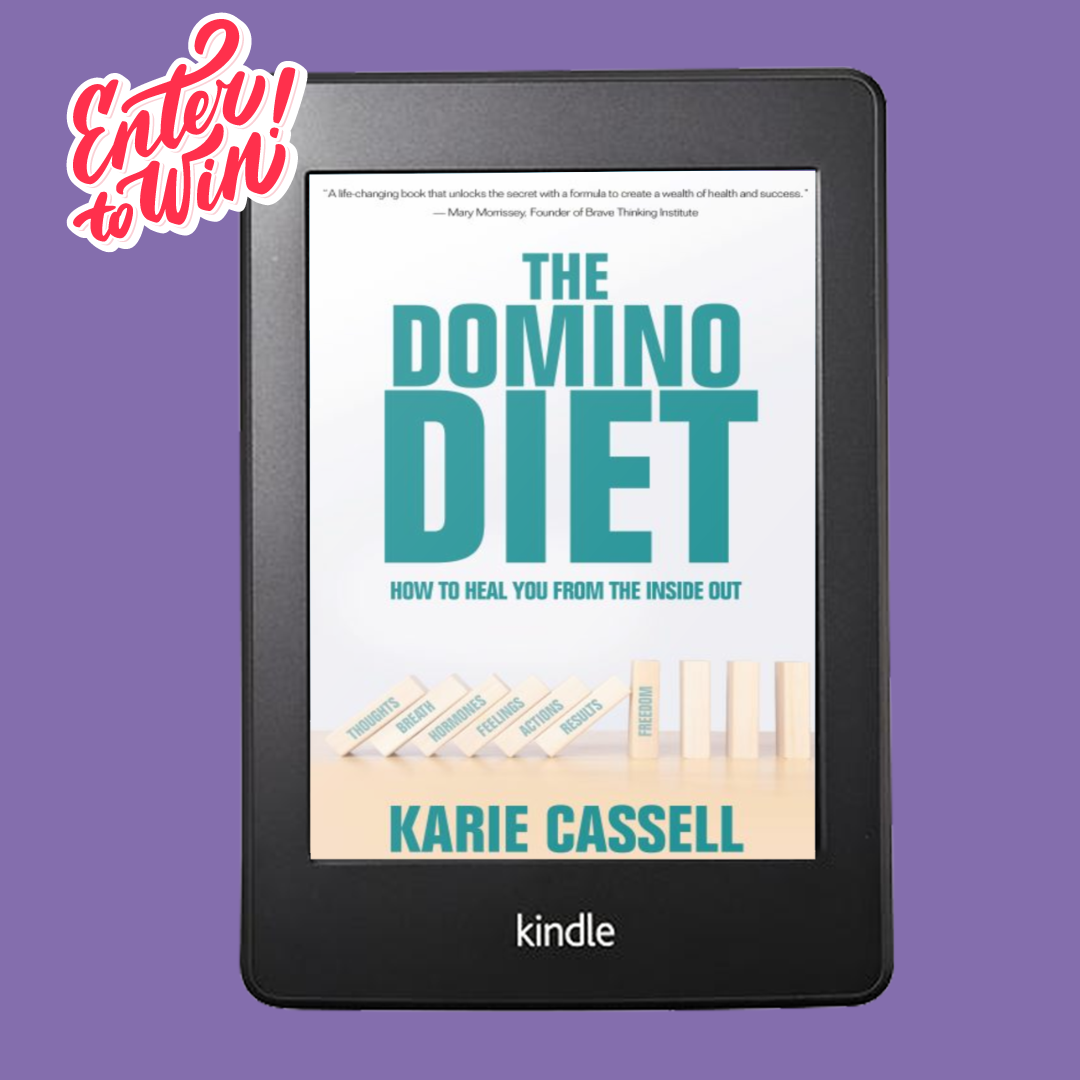
Quick Label Reading Guide: Using the Divide by 5 Rule
When you're grocery shopping and trying to make healthy choices, food labels can feel overwhelming. This guide simplifies the process, helping you quickly assess the nutrition of any product using the Karie's Divide by 5 Rule. By following these easy steps, you’ll know what you’re consuming in a pinch.

Step 1: Check the Serving Size
Always start with the serving size listed at the top of the label. Compare this to the size of your package or container. The label might show "per package," "per ½ package," or another fraction, so it’s essential to know how much you're actually eating.
Example:
- Serving Size: 1 cup (250ml)
- Servings Per Package: 2
If you eat the entire package, remember that you’ll need to double the calories, carbohydrates, fat, and other nutrients.

Step 2: Glance at the Calories
For those managing their weight, pay attention to the calories per serving. This gives you a sense of the energy intake from the food. Always consider whether you're eating one serving or the entire package.
- Calories Per Serving: 200
- If you consume the whole package: 400 calories
Tip: Speak with a registered dietitian if you're looking to adjust your calorie intake for weight management.
Step 3: Focus on Total Carbohydrates
The Total Carbohydrates are typically bolded on the label. Underneath the total carbohydrates, it includes sugar, fiber, and sometimes starch (though starch isn’t often shown separately)-these all together add up to the total carbohydrates.
Next--To understand how many net carbs (carbohydrates that impact blood sugar) you're eating:
- Total Carbs - Fiber = Net Carbs
Fiber doesn’t convert into sugar, so it’s subtracted from the total. This gives you the carbs that will actually impact your energy and blood sugar.
Example:
- Total Carbs: 20g
- Fiber: 5g
- Net Carbs: 20g - 5g = 15g net carbs

Step 4: Divide by 5 for Quick Calculations
Now, apply the Divide by 5 Rule to estimate how much sugar you're consuming:
- Take the net carbs and round up or down for easy math.
- Then divide by 5 to estimate the number of teaspoons of sugar.
Example:
- Net Carbs: 15g
- Rounded: 15g
- Divide by 5: 15 ÷ 5 = 3 teaspoons of sugar
(While the true math is dividing by 4, rounding and dividing by 5 offers a simpler way to make decisions while shopping.)

Step 5: Assess Total Fat
Now, look at the Total Fat content. Again, use the Divide by 5 Rule:
- Total Fat ÷ 5 = Teaspoons of Fat
Example:
- Total Fat: 10g
- Rounded: 10g
- Divide by 5: 10 ÷ 5 = 2 teaspoons of fat

Step 6: Estimate Protein
For protein, every 5 grams of protein equals roughly 1 ounce of protein.
Example:
- Protein: 15g
- 15g ÷ 5: 3 ounces of protein
Typical examples of 1 ounce of protein:
- 1 large egg
- 1 oz of chicken or turkey
- 1 oz of nuts

Step 7: Consider Other Nutrients: Sodium, Fiber, and Vitamins
-
Sodium: If you're aiming for 1500-2000mg of sodium per day, check the sodium content. A product with less than 140mg per serving is considered low sodium.
-
Fiber: If a product contains 5g or more of fiber, it’s considered a good source of fiber. Aim for 20-25g of fiber per day.
-
Vitamins and Minerals: Look for iron and other vitamins if you’re trying to increase these in your diet. For example, women may want to prioritize iron-rich foods.

Quick Examples
Example 1: Granola Bar Label
- Serving Size: 1 bar
- Calories: 200
- Total Carbohydrates: 25g
- Fiber: 5g
- Net Carbs: 25g - 5g = 20g
- Divide by 5: 20 ÷ 5 = 4 teaspoons of sugar
- Total Fat: 8g
- Divide by 5: 8 ÷ 5 = 1.6 teaspoons of fat
Example 2: Cereal Label
- Serving Size: 1 cup
- Calories: 150
- Total Carbohydrates: 30g
- Fiber: 4g
- Net Carbs: 30g - 4g = 26g
- Divide by 5: 26 ÷ 5 = 5.2 teaspoons of sugar
- Total Fat: 3g
- Divide by 5: 3 ÷ 5 = 0.6 teaspoons of fat
Why Use the Divide by 5 Rule?
The Divide by 5 Rule helps you quickly visualize what you're consuming, whether it's sugar, fat, or protein, and allows you to make healthier choices in the grocery store. It’s a practical shortcut when you don’t have time to do precise math.
Final Tips:
- For Weight Management: Watch your calories and carbohydrate intake, and consider fiber and protein content to keep you full longer.
- For Heart Health: Choose low-fat, low-sodium options and prioritize fiber-rich foods.
- General Health: Pay attention to vitamins and minerals, especially if you're looking to boost your intake of key nutrients like iron and fiber.
Consult a registered dietitian for personalized advice on how to balance your diet in a way that fits your lifestyle and health goals!
For your FREE Label Reading Guide: Click the link here Get Free Label Reading Guide & More
For more nourishing blogs and recipes, connect with Karie!


Karie Cassell RD, LMC
Bestselling Author, Dietitian, Nutrition Coach
[email protected]
www.kariecassell.com
Ph. 780-814-2983
Customize Your Nutrition Tips & A Chance to Win my Book!
Check the boxes that apply to your request and you'll be entered into monthly Book Giveaway!
Don't worry, your information will not be shared.
We hate SPAM. We will never sell your information, for any reason.
Categories
All Categories 100-300 calorie snacks active active after meals adult snacks adutls alcohol alcohol sugars andropause anti inflammatory antioxidant anxiety baking healthy balanced nutrition balanced sugars beauty benefits bento box beverages beyond diets biotin blood sugar management blood sugars burnouot cacao caffeine caffeinne calcium calories cancer carbohydrates causes and treatments chia chocolate cholesterol christmas cleanse cold collagen compare calories complete protein cooking meals cortisol coumadin cramps craving connection dairy free dehydration desserts detox diabetes diet dietician dietitian diets digest don't like cooking during activity easy and tasty easy meal ideas eating for one eating out electrolytes end food war enzymes excercise fat fiber fight flight flexitarian flu fruits and vegetables aka veggies frustration fuel fuel performance and weight goal general healthy glucose load gluten free glycemic index goals growth habits hair harvest salads headaches healing health coach health professional health wellness healthy healthy chocolate healthy dishes healthy drink healthy holiday meal ideas healthy holidays healthy ice cream substitute healthy lunch healthy prepared meals healthy size healthy snacks healthy vegetables dishes heart heart health heart heatlh herbs hormones hot flash hot flashes how much protein hydration hypoglycemia immune boost immune health inflamation inflammation insomnia intervals iron iron absorption kid snacks kids kids in sports kids smoothie lab values label reading lean mass leg cramps less than 500 life coach lifestyle long-term low calorie low calorie buffet low calorie chritmas low fat low gi low sodium low sugar lower calorie turkey dinner lower sugar lunch macronutrients magnesium magnesium foods magnesium supplement maintain make-ahead healthy meal compare meal plan meal planning meals men's health menopause menopuase mental health menu metabolism micronutrients milk milk substitutes mind body spirit minerals mocktails monk fruit more energy morning workout movement muscle aches muscle cramps muscles nails new year's resolutions nightshades nut free nutrition reset nutritionist nutritious meal pcos picky eater plant-based polycystic ovarian portion potassium pre workout prediabetes prepare ahead produce prostate protein raw fruit raw vegetables recipe recipes recovery nutrition reset rest digest create restless legs sabotage saw palmentto serotonin shape skin sleep sleep snacks smoothie smoothie recipe snack meals sodium sports sports drink sports nutrition step converter stevia storing stress sugar sugar substitute sugars summer sunshine supersize supplements tension thanksgiving timing of meals tired too much protein trends turmeric ultra-processed under 500 calories vacation health vegan healthy vegan holiday vegan recipes vegetables vitamin vitamin d vitamin k vitamins warfarin weight weight gain weight goal weight loss younger vs older zincStay connected with Nourishing News & updates!

Click the Button and customize your Nutrition Tips and You will be entered for my monthly Book Giveaway!
For Nourish to Flourish healthy tips and recipes, contact Karie!

Bestselling Author
Phone: 780-814-2983
[email protected]
www.kariecassell.com
Click here to discover THE DOMINO DIET
Recent Posts


